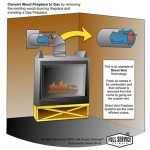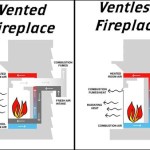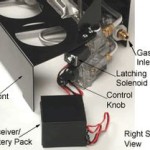Fireplace Damper Handle Replacement Parts: A Comprehensive Guide
The fireplace, a traditional focal point in many homes, provides warmth and ambiance. However, the efficiency and safety of a fireplace depend heavily on the proper functioning of its components, particularly the damper. The damper’s handle, responsible for opening and closing the flue, is a critical element. When this handle malfunctions or breaks, replacing it promptly becomes essential. This article provides a comprehensive guide to fireplace damper handle replacement parts, covering various types, selection criteria, replacement procedures, and maintenance considerations.
A fireplace damper controls airflow through the chimney. When open, it allows combustion byproducts to escape. When closed, it prevents drafts and heat loss when the fireplace is not in use. The handle is the user's interface for operating the damper. A damaged or missing handle renders the damper inoperable, leading to energy inefficiency and potential safety hazards. Understanding the different types of damper handles and how to replace them correctly is crucial for maintaining a safe and efficient fireplace.
Types of Fireplace Damper Handles
Fireplace dampers come in various designs, and consequently, their handles also vary. Identifying the specific type of handle is the first step in selecting the correct replacement part. Common types include poker handles, rotary handles, and cable-operated handles.
Poker Handles: These are the most common type, typically found on throat dampers located just above the firebox. A poker handle is a simple metal rod inserted into a mechanism that pivots the damper plate. The handle is usually straight or has a slight bend for better leverage. Replacement poker handles are generally universal, but length and diameter must be compatible with the existing damper mechanism.
Rotary Handles: Rotary handles are often found on top-mounted dampers, also known as chimney top dampers. These dampers sit atop the chimney and seal it off completely when closed. The handle, usually located inside the firebox, is connected to the damper via a cable or chain. Turning the handle rotates a mechanism that opens or closes the damper. Replacement rotary handles must match the original design to ensure proper operation and cable compatibility.
Cable-Operated Handles: These handles are also used with top-mounted dampers and are similar to rotary handles. They utilize a cable to control the damper plate. However, instead of rotating, the handle typically slides or pulls, adjusting the cable tension to open or close the damper. Replacing a cable-operated handle involves ensuring the new handle is compatible with the existing cable and locking mechanism.
It's important to note that within each type, variations exist in terms of material, size, and specific design. Therefore, careful examination of the existing handle and damper mechanism is crucial before purchasing a replacement.
Selecting the Correct Replacement Part
Once the type of damper handle is identified, selecting the correct replacement part is paramount. Several factors influence this selection process, including compatibility, material, size, and ease of installation.
Compatibility: The replacement handle must be compatible with the existing damper mechanism. For poker handles, ensure the diameter of the handle matches the receiving hole in the damper plate. For rotary and cable-operated handles, compatibility with the cable attachment point and any locking mechanisms is crucial. Consulting the fireplace or damper manufacturer’s specifications can ensure compatibility.
Material: Damper handles are typically made of metal, such as steel or cast iron, due to the high temperatures they may be exposed to. The material should be durable and resistant to corrosion. Consider the material of the existing handle and choose a replacement made of a similar or superior material. Stainless steel is a good option for its corrosion resistance.
Size: The size of the handle affects its functionality and ease of use. A handle that is too short may be difficult to grasp, while a handle that is too long may obstruct the firebox opening. Measure the existing handle's length and choose a replacement of similar dimensions. For poker handles, the diameter is also crucial to ensure it fits securely in the damper plate.
Ease of Installation: The installation process should be straightforward. Simple poker handles usually require only inserting the handle into the damper plate. Rotary and cable-operated handles may involve more complex installation procedures, such as attaching the cable and adjusting the tension. Choose a replacement handle that comes with clear instructions and requires minimal tools for installation. Consider whether professional installation is necessary, especially for complex damper systems.
Before purchasing a replacement, take detailed measurements of the existing handle and the damper mechanism. If possible, bring the old handle to a hardware store or fireplace supply shop to ensure an accurate match. Online retailers often provide detailed product specifications and compatibility charts to assist in the selection process.
Fireplace Damper Handle Replacement Procedure
Replacing a fireplace damper handle is generally a straightforward process, but it requires caution and adherence to safety guidelines. The following steps outline the general procedure for replacing different types of handles.
Safety Precautions: Before starting any repair work on a fireplace, ensure the fireplace is cool and no hot embers are present. Wear gloves to protect your hands from dirt and sharp edges. Use eye protection to prevent debris from entering your eyes. If working on a top-mounted damper, ensure safe access to the chimney and use appropriate safety equipment, such as a ladder and safety harness.
Replacing a Poker Handle: This is the simplest replacement procedure. First, remove the old handle. It may simply slide out, or it may be secured with a set screw. If a set screw is present, loosen it with an appropriate wrench or screwdriver. Once the old handle is removed, insert the new handle into the damper plate. Ensure it fits snugly and pivots the damper plate smoothly. If necessary, tighten the set screw to secure the handle in place.
Replacing a Rotary or Cable-Operated Handle: This procedure is more complex and requires careful attention to detail. First, disconnect the cable from the old handle. This may involve loosening a set screw, releasing a clamp, or detaching a connector. Take note of how the cable is attached to ensure proper reattachment. Next, remove the old handle from its mounting bracket. This may involve unscrewing it or releasing a locking mechanism. Install the new handle onto the mounting bracket and secure it in place. Reattach the cable to the new handle, ensuring it is properly aligned and tightened. Adjust the cable tension as needed to ensure the damper opens and closes smoothly. Test the damper operation multiple times to verify proper functionality.
Troubleshooting: If the new handle does not fit properly or the damper does not operate smoothly, re-examine the compatibility of the replacement part and the installation procedure. Check for any obstructions or binding in the damper mechanism. If the cable is frayed or damaged, it may need to be replaced as well. If you are unsure about any step of the replacement process, consult a qualified fireplace technician.
After completing the replacement, thoroughly inspect the damper and handle operation. Ensure the damper seals tightly when closed and opens fully when open. Check for any signs of leaks or drafts around the damper. Proper installation and adjustment are critical for ensuring the safety and efficiency of the fireplace.
The material of the replacement handle affects not only its durability but also its aesthetic appeal. Consider materials like brass or bronze for a more decorative look if it aligns with the fireplace décor, provided they are heat-resistant and suitable for the application.
The operational lifespan of the replaced handle can be extended by performing regular checks and light maintenance. This involves cleaning the handle periodically to remove any soot or debris that might accumulate and impede its movement. Applying a small amount of heat-resistant lubricant to the moving parts can also ensure smooth operation.
When selecting a replacement handle, consider those that are specifically designed for high-temperature environments. These handles are often made from alloys that are less prone to warping or corrosion, ensuring longevity and reliability.
Proper documentation of the replacement process, including the type of handle replaced, the date of replacement, and the source of the part, can be beneficial for future maintenance or repairs. This record can help in identifying any recurring issues and facilitate quicker troubleshooting.
Furthermore, it's advisable to retain the packaging and warranty information of the new handle. In the event of a manufacturing defect or premature failure, having this information can simplify the process of obtaining a replacement or repair under warranty.
In some cases, a damaged handle might be indicative of a larger issue with the damper mechanism. If the handle broke due to excessive force or resistance, it’s worthwhile to inspect the damper itself for any signs of damage or corrosion. Addressing these underlying issues can prevent future handle failures.

Replacement Chimney Damper Handle Fireplace

Fireplace Dampers The Blog At Fireplacemall

Fireplace Dampers Cast Iron Marshall Stamping

Fireplace Throat Damper Handles Several Styles To Choose From

Fireplace Damper Repair Full Service Chimney Kansas City

What Is A Chimney Damper Full Service

Flueblocker For 16 X16 Square Chimney Flue Sheep Fireplace Draft Stopper Replacement Damper Plug Better Than Inflatable Pillow Or Balloon Save Energy Block Odor Debris Com

Chimney Archives Swede Sweep Dryer Vent Cleaning

How To Fix A Stuck Fireplace Damper The Blog At Fireplacemall

Fireplace Damper Repair Full Service Chimney Kansas City
Related Posts








